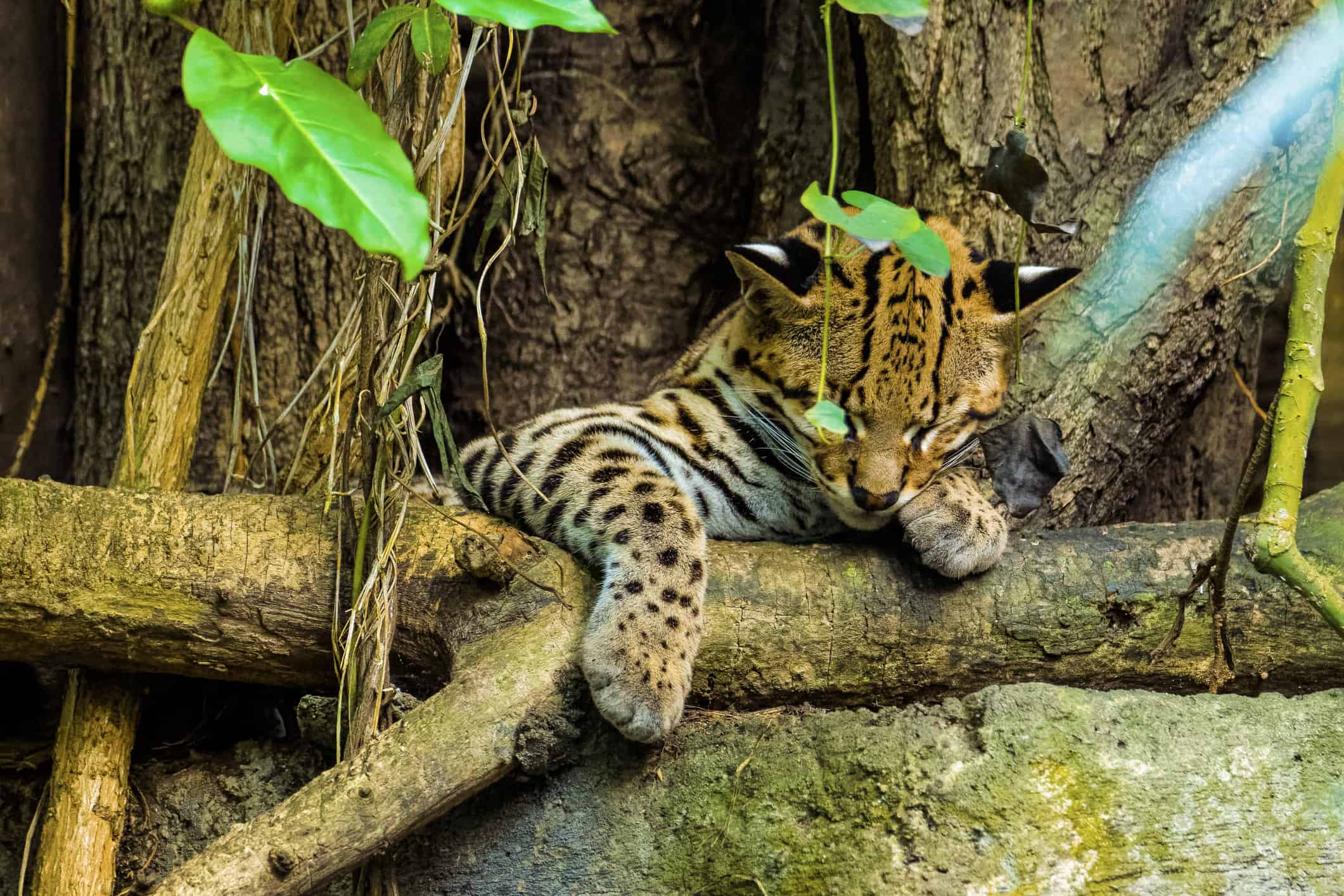Ocelots are reminiscent of your typical domesticated cat and may share some similarities. But the experience of owning one as a pet is vastly different. Certainly, ocelots are adorable, especially when they’re kittens. But so are bear cubs. And none of this adorable-ness changes the wild nature of these animals. They are best appreciated from afar. There are many practical problems to owning an ocelot. These include acquiring one, its cost, legal restrictions in your location, and then, of course, veterinary care. Although it’s nice to daydream about getting to know an ocelot, those thoughts are better off remaining fantasies.
What Are Ocelots?

As cute and cuddly as they look, a wild ocelot in your home may not be the best idea.
©Thorsten Spoerlein/ via Getty Images
Ocelots are wild cats! They grow to about medium size and have dappled coats that closely resemble that of jaguars. They grow to weigh a maximum of 35 pounds and are up to 35 inches long. When standing on all four legs, they may be as tall as 20 inches. Maine coons are the largest domesticated cats and you’ve probably seen photos of these huge, fluff balls with their owners. Ocelots are even bigger than that! So, as cute and cuddly as they look, a grumpy ocelot in your home may not be the best idea. These cats live to about 10 years old when they’re out in the wild. In captivity, their life spans greatly increase, with some making it past 20 years of age.
These mammals are carnivores with their diet consisting primarily of small rodents. However, they may venture out to attack and kill other prey like lizards, snakes, rabbits, and even young deer. These wild cats carry out their hunting activities after nightfall. Ocelots may actively hunt but they may also wait for prey to come into their vicinity for an easier meal. In the wild, ocelots prefer dense environments like forests where they also have access to plenty of water sources. Aside from forests, ocelots are also found in savannas and mangrove swamps. They can inhabit locations from the northernmost region of Argentina all the way north to the southern region of Texas.
What is the Conservation Status of Ocelots?
In 1972, ocelots were listed as an endangered foreign species. Right after the Endangered Species Act in 1973, ocelots were “grandfathered” into the new list. Ocelots used to roam throughout Louisiana and Arkansas as well as Texas. However, the loss of their habitats along with hunting severely decreased their population in the U.S. Today, there are less than 120 known ocelots still calling the U.S. home. When it comes to the rest of the Americas, however, ocelots are listed as “Least Concern.” These cats outnumber other cats in Central and South America, which is why they’re listed this way. However, their populations continue to decline.
Why Ocelots Are Not Good Pets

If you bring an ocelot into your neighborhood, it could pose a serious threat to other pets.
©Saad315/Shutterstock.com
When ocelots were endangered, it was illegal to own an ocelot as a pet. Since their conservation status has changed, however, some locations allow owning them as pets. Others have laws in place to prevent owning a wild cat. These cats don’t exactly pass as house cats once they’re fully grown but they may be easier to conceal when they’re still kittens. Domesticated cats make wonderful companions, so it’s easy to think that ocelots are just as friendly. However, there are a couple of reasons why it’s not a good idea to keep an ocelot as a pet.
Ocelots are avid hunters. If you bring an ocelot into your neighborhood, it could pose a serious threat to other pets. These cats are wild and won’t be satisfied or satiated with your typical cat toys and treats. Ocelots are like the worst house cat times a hundred. They’re loud and needy. Unless you’re ready to dedicate yourself full-time to this wild animal, you’re bound to encounter behavioral issues. These cats will scent mark, unless you train it out of them very early on. Another thing to consider is the smell of a house cat’s litter box. An ocelot is a much bigger cat with much smellier waste!
Ocelots won’t curl up indoors, content to be with you. These cats need outdoor space to run and explore. But that space needs to remain enclosed to keep nearby pets safe. These wild cats are born to be — well, wild! You would have to conform your entire existence to keeping your ocelot happy. You would have to say goodbye to your nice furniture, knick-knacks, and even your rugs and carpet.
The photo featured at the top of this post is © Tom Smylie, Public domain, via Wikimedia Commons – License / Original
Thank you for reading! Have some feedback for us? Contact the AZ Animals editorial team.






